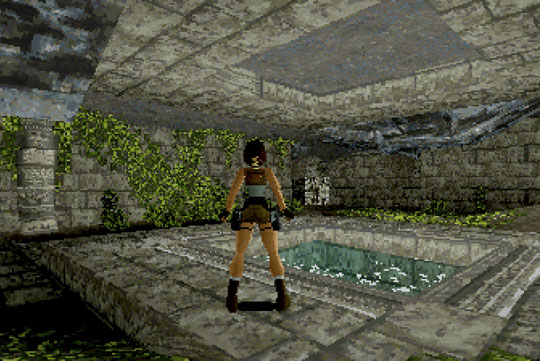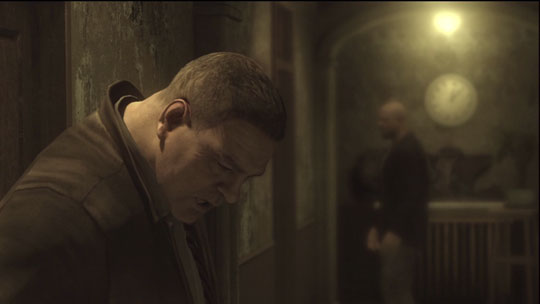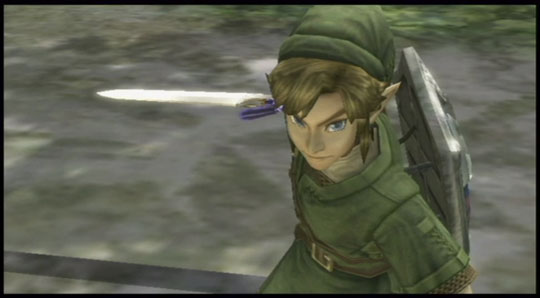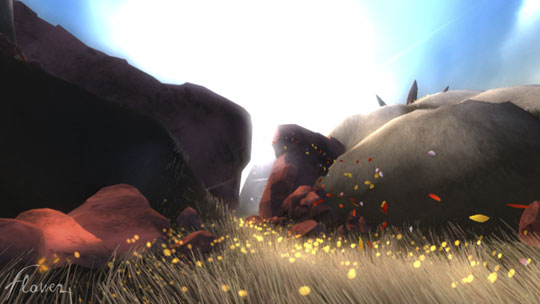American Art explores the beguiling worlds of video games
“The Art of Video Games” is one of the first major exhibitions to explore the 40-year evolution of video games as an artistic medium, with a focus on striking graphics, creative storytelling and player interactivity. The new exhibition will feature some of the most influential artists and designers across five eras of game development, from early pioneers to contemporary designers. Just as film, animation and performance are, video games are a compelling and influential form of narrative art, using player participation to tell stories and engage audiences.
“The Art of Video Games” will be on display at the Smithsonian American Art Museum from March 16 through Sept. 30. Chris Melissinos, former chief evangelist and chief gaming officer for Sun Microsystems and founder of PastPixels, is the guest curator of the exhibition. Georgina Goodlander, the museum’s social media and Web content manager, is the exhibition coordinator. The exhibition will travel to several cities in the United States following its run in Washington, D.C.
“Video games are a prevalent and increasingly expressive medium within modern society,” said Melissinos. “In the 40 years since the introduction of the first home video game, the field has attracted exceptional artistic talent. Video games, which include classic components of art, offer designers a previously unprecedented method of communicating with and engaging audiences by including a new element, the player, who completes the vivid, experiential art form by personally interacting with the game elements.”

Tomb Raider, Jeremy H. Smith, executive producer; Toby Gard, Heather Gibson, Neal Boyd, graphic artists; Jason Gosling, Paul Douglas, Gavin Rummery, programmers, SEGA Saturn, 1996, © 1996 SQUARE ENIX CO., LTD. All Rights Reserved.
“The Art of Video Games” focuses on the interplay of graphics, technology and storytelling through some of the best games for 20 gaming systems ranging from the Atari VCS to the PlayStation 3. The exhibition features 80 video games, selected with the help of the public, that demonstrate the evolution of the medium. The games are presented through still images and video footage. In addition, the galleries will include video interviews with developers and artists, historic game consoles and large prints of in-game screen shots.
New technologies allow designers to create increasingly interactive and sophisticated game environments while staying grounded in traditional game types. Five featured games, one from each era, will be available in the exhibition galleries for visitors to play for a few minutes, to gain some feel for the interactivity. The playable games—Pac-Man, Super Mario Brothers, The Secret of Monkey Island, Myst and Flower—show how players interact with the virtual worlds, highlighting innovative new techniques that set the standard for many subsequent games.
The museum invited the public to help select the video games in the exhibition from a pool of 240 games was selected by Melissinos and an advisory group consisting of game developers, designers, industry pioneers and journalists. More than 3.7 million votes were cast by 119,000 people in 175 countries.
Micro-donations
The museum also launched its first micro-donation campaign in connection with the exhibition in September 2011. Individuals can become a part of this historic exhibition by adding their name to the credits projected in the exhibition by supporting the exhibition online or by text message. See the museum’s website for details.

Heavy Rain, David Cage, writer and director, Sony Playstation 3, 2010, Sony Computer Entertainment America LLC.
Free Public Programs—GameFest
“GameFest,” a three-day festival with talks, discussions, open game playing, music and movies, will celebrate the opening “The Art of Video Games.”
Friday, March 16: Melissinos moderates two panel discussions exploring the history of video game design and imagining what is in store for the future, from 3 p.m. to 6 p.m. in SAAM’s McEvoy Auditorium. Nolan Bushnell, founder of Atari and a key player in the growth and popularity of the first video games, offers the keynote address at 7 p.m., which is followed by a screening of TRON (1982) at 8:30 p.m. in the museum’s Kogod Courtyard.
Saturday, March 17: Activities for all ages are featured from 11:30 a.m. to 7 p.m. in the museum’s Kogod Courtyard, including live-action games with costumed characters by Spontaneous Art and a soundtrack by DJ MKO; performances by 8-Bit Weapon, ComputeHer and The Triforce Quartet; hands-on craft activities; the opportunity to play a variety of classic and modern video games; and a photo booth where costumes are encouraged. A talk by Robin Hunicke, video game designer at thatgamecompany, is at 5 p.m. in the museum’s McEvoy Auditorium, followed by a screening of the documentary The King of Kong: A Fistful of Quarters (2007) at 7 p.m. The activities in the courtyard are repeated Sunday, March 18, from 11:30 a.m. to 7 p.m.

The Legend of Zelda: Twilight Princess, Shigeru Miyamoto, executive producer; Eiji Aonuma, director; Satoru Takizawa, art director; Eiji Aonuma, Satoru Iwata, producers, Nintendo Wii, 2006, Nintendo of America, Inc.
Additional programs include a concert by University of Maryland’s Gamer Symphony Orchestra, Sunday, April 29, at 3 p.m. in the museum’s Kogod Courtyard. The 21st Century Consort presents “Music of Games” Saturday, May 5, at 5 p.m., with a pre-concert lecture at 4 p.m.; tickets are $20 and can be purchased online at residentassociates.org or by calling (202) 633-3030.
A detailed schedule of all activities and links to webcasts will be available online.
Symposium
“Video Games: Beyond Play,” a symposium that examines the changing roles of video games, consists of two panel discussions Friday, May 4, from 1 to 4:30 p.m. in the museum’s McEvoy Auditorium. The first panel, “Video Games at Work” from 1 to 2:30 p.m., is an in-depth look at how video games are revolutionizing areas such as health care, education, civics, journalism and national defense. Panelists include: Asi Burak, co-founder of Games for Change; Brian Crecente, editor-in-chief of the video game blog “Kotaku;” J.C. Herz, author of Joystick Nation; Ben Sawyer, co-founder of DigitalMill Inc.; and moderator Constance Steinkuehler Squire, senior policy analyst with the White House Office of Science and Technology Policy.
The second panel, “Game Change: Society and Culture” from 3 to 4:30 p.m., examines the impact of video games in the fields of academic research, science, art and education. Panelists include Hunicke; Richard Lemarchand, lead game designer at Naughty Dog; Eric Zimmerman, game designer, educator and co-author of Rules of Play; and moderator Colleen Macklin, associate professor of design and technology at Parsons the New School for Design.

Flower, Jenova Chen, creative director; John Edwards, lead engineer. Developed by thatgamecompany, LLC, Sony Playstation 3, 2009, Sony Computer Entertainment America LLC.
Publication
A companion book, The Art of Video Games: From Pac-Man to Mass Effect, accompanies the exhibition. It is written by Melissinos with a foreword by Broun and an introduction by Mike Mika, head of development for Other Ocean Interactive and a prominent advocate for the preservation of video game history. It includes more than 100 composite images of games created by Patrick O’Rourke. The book, published by Welcome Books in cooperation with the Smithsonian American Art Museum, will be available in the museum store and at bookstores nationwide (hardcover, $40).
Posted: 20 January 2012
- Categories:








